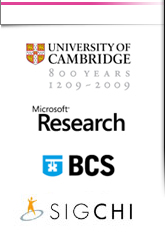|
01. Moviestorm
From script to final cut, Moviestorm will take you from initial concept to finished movie. It's easy to use, full-featured and compatible with other movie making tools, making it suitable for first-time movie makers and advanced users alike
Contact: Matt Kelland
|
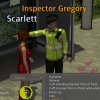
|
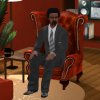 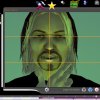 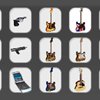 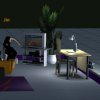
|
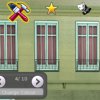
|
|
02. AlertMe Smart Energy
AlertMe will allow the user to monitor and control their whole home's energy
use - from electricity to heating and hot water use. Connected to the
Internet via their broadband connection, it continually measures and
controls appliances and monitors and manages overall energy use. Users can
view information online or via their mobile phone, adjust heating controls,
turn off switches and plan use for non-peak times. To be launched at the end
of the year, it will save up to 25% on energy bills and approximately one
tonne of CO2 per home each year.
|

|
|
03. SenseSurface
SenseSurface from Girton Labs, Cambridge, is an innovative of a 2mm
thin (plus battery) computer hardware platform for embedding in
paper, card or adhering to the human body. Sensesurface paper has
sensing functions like touch, motion, heat, data logging up to one
year and has visual and audio outputs. A new type of manufacturing
process eliminates the normal copper printed circuit board and so
makes the hybrid paper computer, very thin, flexible, writable and
robust. Novel environmental sensors allow very long battery life up to
one year. Applications include time sensitive Sticky Notes for
Alzheimer's patients, timed reminders for appointment cards for
business meetings, interactive business cards. Ordinary paper can have
computer functions built in, such as reminders to pay paper invoices.
As the computer is 2mm thin and can include motion sensing, it can be
attached as a sticky label for finding lost objects, e.g. mobile
phones. First applications will include medical applications for
sensing plasters on the skin.
|

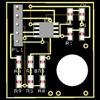
|
|
04. Scent Whisper
Scent Whisper' is a responsive jewellery project that provides a new way to send a scented message by fusing emerging technologies with perfumery, to create a new level of experience and wellbeing, and as a novel communication system.
Contact: Dr Jenny Tillotson
|

|
|
05. Phonetic Arts 2009
Phonetic Arts delivers technology that generates natural expressive speech, allowing computer games to say any sentence in any type of voice. With world leading expertise in all aspects of speech technology, our goal is to free games developers from the constraints of recorded samples and allow them to create rich, expressive and responsive dialog within their games.
Contact: Steve Tyson
|
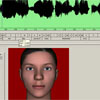
|
|
06. Cilla
Cilla is a prototype system for browsing digital photograph collections in an interactive and intuitive way. It is a deliberate attempt to break away from the "slide show" concept, displaying multiple images on the screen at any one time and allowing the user to guide the process depending on what interests them.
|
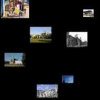
|
|
07. Imagetron
Imagetrons (of Visual Perception) are a set of image browsing methods in three dimensional space. They provide a way of browsing large sequences of images simultaneously on a computer display, such that the images and their sequence may be easily perceived and identified. Geometries found in nature like spirals and conic helixes are deployed to compose and present intuitive visualisations of image sequences.
Contact: Vangelis Pappas-Katsiafas
|
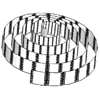
|
|
08. Gesture interface for large panel
Toshiba Research Europe has developed a hand pointing interface
that uses a single camera. Sample applications include a photo and video viewer as well as an application to inspect 3D models.
The system uses multiple trackers in a cascaded structure.
The idea is to apply the most precise method possible while being able to fall back to less precise but more robust trackers.
Contact: Bjorn Stenger
|
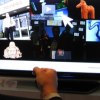
|
|
09. Emotion AI
For digital character content creators and developers who are dissatisfied with the cost and quality constraints that come with traditional animation systems; Dynamic Personality and Emotion Synthesis is an animation toolkit plugin that automates lifelike digital character content creation and a Software Development Kit that automates the control of run time character behavior.
Contact: Ian Wilson
|
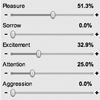
|
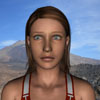
|
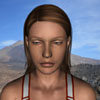
|
|
10. Inclusive Design Simulators
Impairment simulation helps to understand how capability loss affects the ability to interact with a product or service, or perform normal everyday activities. This understanding enables people to make better informed decisions throughout the design process, so that the output can better satisfy the needs of more people. This interactive demonstration will include wearable impairment simulators that reduce the functional abilities of the eyes and hands, and software impairment simulators that modify image and sound files.
Contact:
|
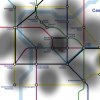
|
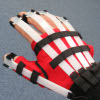 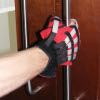
|
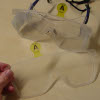
|
|
11. Haptics while moving
Existing mobile information systems often require users to transfer
attention from their environment to a digital representation of the
location, which can be complex and frustrating. Our mobile prototype
allows people to explore their environment in a more 'heads up' way by
providing directional haptic feedback. By pointing and scanning a
mobile device the user can discover related digital information about
their surroundings, while still remaining immersed in the physical
world.
Contact: Simon Robinson
|
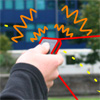
|
|
12. Designing Tangibles for Learning
Explore the physics of light by manipulating everyday objects on a DIY
interactive surface built for children.
Contact: Jennifer G. Sheridan
|
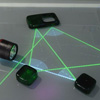
|
|
13. Healthradar
From Nokia Research Cambridge
|
|
|
14. MORPH
From Nokia Research Cambridge
Contact: Piers Andrew
|
|
|
15. ProFORMA: Probabilistic Feature-based On-line Rapid Model Acquisition
The generation of 3D models of real objects is very useful for many
computer vision applications. ProFORMA is a system designed to enable
on-line reconstruction of textured 3D objects rotated by a user's hand.
Partial models are created very rapidly and displayed to the user to aid
view planning, as well as used by the system to robustly track the object.
|
|

|
|
|
16. FrontlineSMS
FrontlineSMS is free open source software that turns a laptop and a mobile phone into a central communications hub. Once installed, the program enables users to send and receive text messages with large groups of people through mobile phones and without the need for the internet. Aimed at grassroots non-profits, FrontlineSMS is today being used in over 50 countries around the world in a wide range of social change activities
|

|
|
17. Vision-based Augmented Reality for Mobile Phones
Vision-based augmented reality for mobile phones can turn real objects
(such as simple printed posters) into active surfaces, containing
virtual 3D models and animations which appear to be attached to the
physical surface when viewed with a mobile phone camera. This
early-stage work focuses on the problem of recognising when a known
target is in the image and calculating the position of the camera to
enable the virtual objects to be rendered convincingly into the camera view.
|
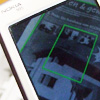
|
|
18. VPlay
Built around a multi-touch surface, VPlay allows users to manipulate video in real time. Digital objects representing video clips, effects and mixers are displayed on the surface and can be easily arranged to create an ever changing video output. Designed to support the practice of VJing, or live video mixing, the novel user interface opens up new possibilities for collaboration and explores the use of touch interfaces in new environments.
Contact: Stuart Taylor
|
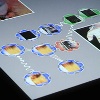
|
|
19. Anglia Ruskin University Digital Performance Laboratory
Musical performance technologies that restore the body to music, including
''Gaggle'ultrasound sensors, the 'Manta', a 48 pseudo-pressure sensitive interface,
the Arduino and Teabox: custom designed and off-the-shelf interfaces,
including 'Tedor' for manipulating EEG data into music-compatible
formats, for instance for use with audio programmes MaxMSP and
SuperCollider.
Contact: Richard Hoadley (Gaggle), Tom Hall (Manta)
or Krisztián Hofstädter (Tedor).
|
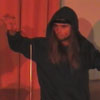
|
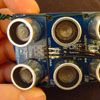
|
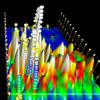
|
|
19. Digital Dance
Jane Turner's Troop company are creating a site-specific dance work for the festival, with live mixed music and visuals from the Cambridge community of composers and digital media researchers.
|
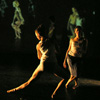
|
|
20. Low-Fi Skin Vision
The e-sense project, based at the Open University and University of
Edinburgh, is investigating how technology can extend our senses and
bodies. We are demonstrating a sensory substitution experiment where a
person can learn to see through their skin. Participants are blind-
folded and they have to try and hit a ball as it is rolled towards
them. A camera image of the ball and the person's hand is converted
into vibrations on the their abdomen. People generally learn very
quickly to sense the movement of the ball and bat it with their hand.
Contact: Jon Bird
|

|
 
|
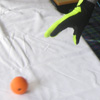
|
|
21. LEGO Mindstorms for informed metrics in virtual worlds.
The research is a collaboration between Future University Hakodate,
Japan, Yokohama National University, Japan and Teesside University,
UK; funded by the UK Prime Minister's Initiative (PMI2) award and
JAIST, Japan. Virtual worlds such as Second Life are gaining much
interest among educators. However, successful implementation of
pedagogical practices and meaningful learning have yet to emerge. We
are using the collaborative construction of LEGO robots and circuits
in virtual worlds to research metrics for assessing synchronous and
asynchronous task processes and outcomes.
|
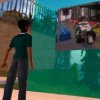
|
|
22. Active Bats
The Active Bat system.
Contact: Simon Hay
|
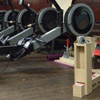
|
|
23. SpARC - Supplementary Assistance for Rowing Coaching
Sensing how people move their bodies, using gaming controllers as low
cost infra-red cameras and a novel system that responds to applied
pressure, allows the computer to begin to take some responsibility for
human-computer interaction by interpreting our behaviour. This work
investigates the potential for providing automated, reliable and high
fidelity supplementary feedback to athletes, specifically rowers in
conjunction with their coaches, on the quality of their technique and
how they could improve it.
Contact: Simon Fothergill
|

|
|
24. Proteus
Proteus is an interactive application that makes it straightforward even for novice users to obtain virtual three-dimensional models of real-world objects from digital video sequences. This is facilitated by the user tracing object outlines in key frames of the video, i.e. the user "paints" on the video. The process of doing so is supported by a novel guidance technique that interactively "snaps" the annotations to object outlines. As a result, Proteus can be used for rapid interactive capture of 3D models that can be used in virtual and augmented reality scenarios such as computer games, online worlds and urban modelling.
Contact: Malte Schwarzkopf
|
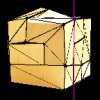
|
|
25. 'Magic Board Games' - Draughts Robot
This draughts-playing robot was built as a 2nd year Computer Science group project. It has an AI engine for human-vs-computer gameplay and uses a system of magnets to move pieces and detect user moves meaning the human player can interact with the game just as they would with a regular draughts board and human opponent.
|
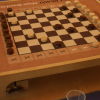
|
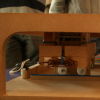 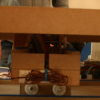
|
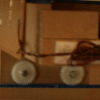
|
|
26. bodyLAB
bodyLAB is a group of activities to help technology designers feel how people use their bodies when communicating. Through the experience gained in these exercises, we hope that our participants gain a larger repetoire of physical examples to draw upon when designing technology that is 'off the desk.'
|
|
|
27. ArgentVision
A third of elderly men & woman live on their own and have little contact
with friends and family - more than 3.6m people in the UK according to a
Help the Aged study from 2008. The study also found that isolation and
loneliness is increasing amongst the elderly - and that this is a major
contributing factor to declining health and quality of life. What can we do
about this? ArgentVision is a an innovative new technology startup that aims to connect
the online community with offline, elderly relatives.
|

|
|
28. BrickBox
BrickBox is a system built on a multi-user touch interface which shows,
as a proof of concept, how multiple users can collaborate when creating
CAD designs. BrickBox was the winner of the 2009 Cambridge computer science
undergraduate design competition.
|
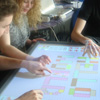
|
|
29. Camvine CODA
CODA is a plug & play system for taking your digital information from
the Network - be it calendars, news feeds, twitter streams, live
reports, or videos - and putting it on screens without having to set
up and manage computers, controlled through a simple web interface.
CODA is not just about displaying dynamic content, but it's also
designed to allow flexible control - we'll be demonstrating some of
this flexibility via mobile and tangible interfaces.
|
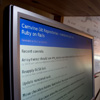
|
|
|
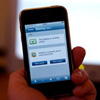
|
|
30. Real-time and context-aware public transport information
Increasing amounts of real-time transport data are being collected, however
these data are often not easily accessible on the move. This project
explores the use of mobile phones as a delivery platform for real-time
public transport information in Cambridgeshire.
|
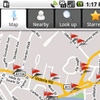
|
|
31. Haptic feedback assistance for motion impairment
Current interface design practices are based on user models and descriptions derived largely from studies of able-bodied users. However, such users are only one point on a wide and varied scale of physical capabilities. The overall aim of this research is to contribute to the enhancement of accessible input systems and interfaces. We now focus on investigations of software-based enhancements of cursor movement for all motion-impaired users, whether Situationally or health impaired and contrast this with haptic techniques derived from our previous work.
|
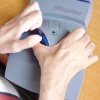
|
|
32. talks.cam.ac.uk
Talks.cam is a user-generated content system for publicising and
syndicating information about talks and seminars around Cambridge.
Talks.cam makes it easy to find information about events in Cambridge,
and for seminar organisers to publicise those events. Talks.cam also
feeds customised "what's on" information directly into the webpages of
many organisations in Cambridge. Talks.cam turns the university inside
out, accumulating research across disciplines, publicising and
archiving current research without requiring 'knowledge transfer'
intermediaries such as publishers and research funding offices.
Contact: Talks.cam webmaster
|

|
|
33. Voice-driven tourist information system
The latest statistical spoken dialogue system developed in the word-leading speech group in Cambridge University Engineering Department will be presented. This is an intelligent voice-driven tourist information system. Users can use natural language to talk to the computer, enquirying information such as bar, restaurant, hotel, etc. The system is adaptive to the change of user goals and can correct its own mistakes while the dialogue goes along. It can be accessed through phone, web browser and desktop programmes.
Contact: Dr. Kai Yu
|
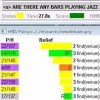
|
|
34. NIKVision
NIKVision is a tabletop solution that allows kindergarten children to take the benefits of the new pedagogical possibilities that tangible interaction and tabletop technologies offer for manipulative learning. It uniquely combines low cost tangible interaction and tabletop technology with tutored learning. The design has been based on the observation of children using the technology, letting them freely play with our games during play sessions.
Contact: Javier Marco Rubio
|
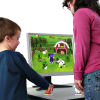
|
|
35. MealPlanner
Unhealthy eating is a problem of great importance in the western
society, with obesity alone having recently been estimated to cost the
society 150 billion dollars per year in the USA, as well as causing
great individual individual suffering. In this demonstration we
present a prototype of a new meal planning system aimed at giving
individuals the knowledge and control they need for changing their
food-related behavior.
|
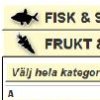
|
|
36. Enlighten
Enlighten is the only genuine real-time radiosity lighting product for
cross-platform game development. Enlighten means freedom to create
interactive worlds with fully dynamic lighting.
Enlighten redefines how lighting is handled and is driving a new
generation of games that truly rival film for their control of mood and
atmosphere.
|
|
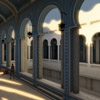 
|

|
|
37. Adaptable Scientific Summariser
A scientific paper summarisation system that can be adapted to
different target audiences (novices or experts). The current system
version works as a generic single-document sentence extract
summariser. It provides several sentence selection techniques based
on the sentence rhetorical status, lexical features and document
content words.
Contact: Marcis Pinnis
|
|
|
38. Vibrotactile information for speed regulation
Using mobile sports computers, such as heart rate monitors,
traditionally relies on visual and auditory feedback (i.e., LCD-display
and beeb alerts). However, while jogging in urban surroundings, for
example, the noise of the traffic can drown the beeb alerts and the need
for focusing the attention to the environment can prevent efficient use
of the visual display. In this sense, presenting information via the
sense of touch seems a promising way to proceed in developing safer and
more user-friendly devices for sports computer users. We demonstrate one
possible way to convey information with vibrating wrist band and chest
belt to regulate, for example, running speed during a physical exercise.
Contact: Jani Lylykangas
|
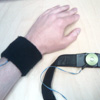
|
|
39. ArrayExpress
The Gene Expression Atlas is a semantically enriched database of meta-analysis based summary statistics over a curated subset of ArrayExpress Archive, servicing queries for condition-specific gene expression patterns as well as broader exploratory searches for biologically interesting genes/samples
Contact: European Bioinformatics Institute
|
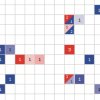
|
|
40. BioCatalogue
BioCatalogue is a centralised registry of curated Life Science Web Services. It allows users to easily publish, discover, annotate and monitor Life Science Web Services. Over 1000 web services have currently been published in the catalogue.
Contact: European Bioinformatics Institute
|

|
|
41. The European Genome-phenome Archive (EGA)
The European Genome-phenome Archive is a service for permanent storage
and sharing of all types of personally identifiable genetic and
phenotypic data. The archive model is optimized for high security and
optimal performance for large data set, and it currently houses
information for more than 20 000 individuals. Strict protocols govern
how information is managed, stored and distributed. An independent
Ethics Committee audits the EGA protocols and infrastructure.
Contact: European Bioinformatics Institute
|
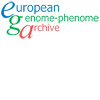
|
|
42. Space Maps Gene Expression Data Visualization
The Space Maps visualization technique enables biologists to
interactively explore such data sets to generate hypotheses, which can
be used to guide further analysis and interpretation of the data. This
novel technique visualizes the expression pattern of each gene as two-
dimensional image and knowledge- or data-derived similarity
relationships between the genes are represented by arranging the
corresponding images on the screen.
Contact: Nils Gehlenborg
|
|
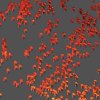 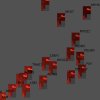 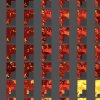 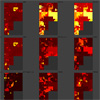
|
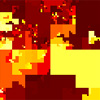
|
|
43. Dasher
Dasher is an information-efficient text-entry interface. It can be driven
by continuous pointing gestures (e.g. head tracker) or a variety of button
modes. These and a version using the novel sensors of an iPhone will be
demonstrated.
|
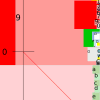
|
|
44. ShapeWriter
ShapeWriter is an efficient and fluid text entry method for mobile
phones. To write words you simply slide your finger over a
touch-screen keyboard. It will be demonstrated on an iPhone.
|

|
|
45. Video Dasher
Video Dasher is a new concept in video navigation. Finding a
previously viewed scene using the standard time bar is time-consuming.
Video Dasher uses the powerful human visual processing system to make
video navigation more efficient.
|
|
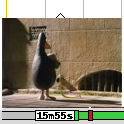
|
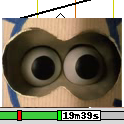
|
|
46. OpenGazer
OpenGazer is an open source library that converts images captured from
an ordinary webcam into continuous or binary signals that can be used
as elementary computer interface devices. Simple gestures (such as
continuous head motions) can then be used to communicate using
programs such as Dasher and Nomon.
|
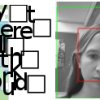
|
|
47. Nomon
Nomon provides a general way of using a single switch to communicate,
which is faster and requires fewer gestures than standard Grid
methods.
|
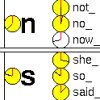
|
|
47a. Parakeet
Parakeet is a system for efficient mobile text entry using speech and a
touch-screen interface. Users enter text into their mobile Linux device
(such as the Nokia N800) by speaking into a Bluetooth microphone. The
user then reviews and corrects the recognizer's output using an
interface based on a word confusion network.
|
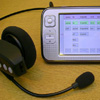
|
|
47b. Speech Dasher
Speech Dasher is a novel interface for the input of text using a
combination of speech and navigation via a pointing device (such as a
mouse). A speech recognizer provides the initial guess of the user's
desired text while a navigation-based interface allows the user to
confirm and correct the recognizer's output.
|
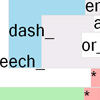
|
|
50. Emotionally Intelligent Interfaces
Existing human-computer interfaces are mind-blind - oblivious to the
user's mental states and intentions. Drawing inspiration from
psychology, computer vision and machine learning, our team in the
Computer Laboratory at the University of Cambridge has developed
mind-reading machines - computers that implement a computational model
to infer mental states of people from their facial signals. The goal is
to enhance human-computer interaction through empathic responses, to
improve the productivity of the user and to enable applications to
initiate interactions with and on behalf of the user, without waiting
for explicit input from that user.
Contact: Peter Robinson
|
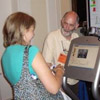
|
|
51. Audio Networking
Audio networking revolves around the use of sound as a medium for
sending and receiving information, whether for human or electronic ears.
The aim of this project has been to demonstrate the feasibility of audio
networking on a mobile platform, namely Google's Android phones. An
application that transmutes pictures into sound has been developed, and
an interactive replacement for frustrating touch-tone phone menus is in
the works.
|
|
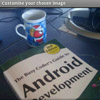 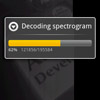
|
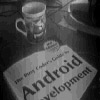
|
|
52. Emotional Robots
We will demonstrate a zoomorphic robot, Virgil, and a humanoid robot, Elvis, which are able to mimic head gestures and facial expressions in real time. The idea behind this research is to develop robots that are able to sense and appropriately respond to the emotions of people interacting with them, in order to help make interacting with them more natural.
Contact: Laurel Riek
|
|
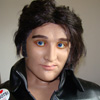 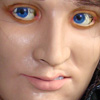
|
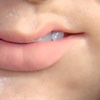
|
|
53. CREATOR Capture
The CREATOR Capture project investigated creative applications of motion capture, and also the ways that value is created and captured during collaborations between technical and creative researchers. We are demonstrating an experimental platform that emerged from collaboration between the Cambridge Computer Laboratory Rainbow Group, and Culture Lab Newcastle.
|
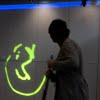
|
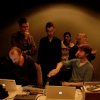 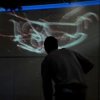 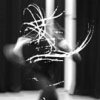 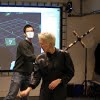
|
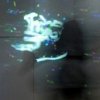
|
|
54. The INtelligent Airport (TINA) Passive UHF RFID Distributed Antenna
Will be demonstrating a radio over fibre system supporting passive UHF RFID. Our approach allows a shared infrastructure to be used for both wireless sensing and communications (e.g. wifi / 3G) at the same time as enabling an expanded field for view for passive UHF RFID and an increased likelihood of tag detection.
Contact: Michael Crisp
|
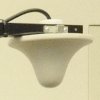
|
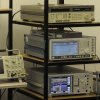
|
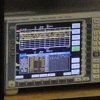
|
|
55. Language learning on mobile phones
The mobile language learning application is being developed as one of the Computer Laboratory's Undergraduate Research Opportunities Projects. The application makes use of the smartphone multimedia features that can assist in language learning. It also enables users to collaboratively create and share the learning material using their phones.
Contact: Vytautas Vaitukaitis
|

|
|
56. Unwrap Mosaic
Contact: Pushmeet Kohli
|
|
|
57. Focal Ring Interaction
In focal ring interaction, the user's touch gestures are interpreted relative to a graphical ring that occupies the centre of the interface. By assigning different effects to strokes in to, out of, across, past, and around such rings, focal ring interfaces allow the user to dynamically switch between implicit interaction modes (e.g. panning and zooming a map) in the context of a single continuous stroke. This opens up new opportunities for casual, expressive, and powerful single touch interactions in applications where multi-touch is either unavailable, inappropriate, or used for higher-level interaction.
Contact: Darren Edge
|
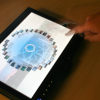
|
|
59. weConnect
weConnect is an online service that enables mobile and desktop users to connect via exclusive and personal media channels. A person can easily create a media mix using images, text, and animations and broadcast the content to another person though a dedicated channel. The recipient can view the content live and retrospectively on the mobile or desktop. Connected with other services such as Amazon.com, weConnect enables users to compile a list of items they may like to purchase or recommend to others. As a research platform, weConnect enabled us to explore the effects of rich media broadcast among individuals in close relationships and social circles.
|
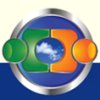
|
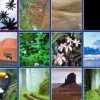 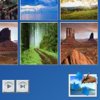
|

|
|
60. TouchSense Haptic (touch feedback) systems
Haptics (touch feedback) is the future of the user experience in
digital devices. Of the five senses, touch is the most proficient, the
only one capable of simultaneous input and output. Touch feedback
improves task performance, increases user satisfaction, and supplies a
greater sense of realism and enjoyment. Immersion provides touch feedback systems for mobile devices and larger touchscreens
|
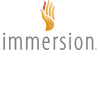
|
|
62. LiveObject
LiveObject performs real time object recognition - it can recognise objects from a range of categories at 20 frames per second.
It is a learning system - it can learn about new objects by placing them in front of the camera and telling LiveObject what the object is. The system can often learn from just a few examples.
Contact: John Winn
|
|
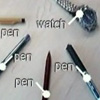
|
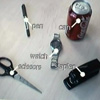
|
|
63. TellTable: Creative Storytelling on Surface
TellTable utilises Microsoft Surface Technology to provide an interactive storytelling experience, helping to stimulate creativity and self-expression by children. The storyteller(s) can manipulate various digital characters and sceneries on Surface, which are created by capturing and editing real world elements using a camera. By doing so, they can narrate, act, and record the story in a lightweight way, similar to how children would tell stories using physical toys. TellTable enables children to create stories with unlimited imagination, and share them with others later on. It also encourages children to discover the physical world and collaborate with others as telling the story.
Contact: Xiang Cao
|
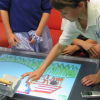
|
|
64. Bill Buxton's Interaction Classics
Historic videos of famous interactive systems from Bill Buxton's personal collection, including Sutherlands Sketchpad, Engelbart's NLS and others.
|
|
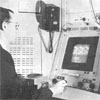 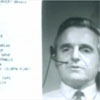 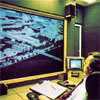
|
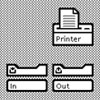
|
|
66. The PPA forest model
We now take it for granted that we use software simulations to build bridges, cars and planes. There is now an urgent need to develop accurate software simulations for various ecological systems, so that we can predict and mitigate the effects of climate change, and design better forms of agriculture. The PPA forest model allows accurate predictions of the annual-to-decade-to-century dynamics of forests, for example to forecast wood production, biodiversity and forest structure under alternative forest management scenarios.
|
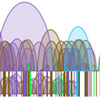
|
|
68. HomeWatcher
Appliance sized visualization of home network use.
Contact: Tim Regan & Christos Gkantsidis
|
|
|
69. Dragonfly
Dragonfly is a powerful platform for building small, connected and interactive devices. The platform provides support for three key areas in developing fully functional devices: electronic circuit assembly, software development and form-factor design. Devices can be quickly assembled out of modular hardware units, programmed using the Microsoft .NET Micro framework, and given shape using 3D printing technologies
Contact: Nicolas Villar
|
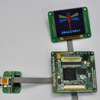
|
|
70. SeeReal
SeeReal has developed scalable solutions to holographic 3D consumer
display products. Prototypes have been built using off-the-shelf
components demonstrating key principles of SeeReal's solution on 20"
high resolution, full colour, interactive 3D holograms. Contrary to stereo 3D which
inherently causes fatigue and eye strain for natural depth 3D scenes
(i.e. properly scaled depth), holographic 3D provides all viewing
information of a natural scene - including eye focus - and therefore
unlimited depth. Whoever can see 3D in real life, can see 3D on a
holographic 3D display without fatigue or other consumer risks.
|

|
|
72. SecondLight
SecondLight is a new surface-computing technology that can project images and detect gestures "in mid-air" above the display, in addition to supporting multitouch interactions on the surface. It works by using an electrically switchable liquid-crystal diffuser as the rear-projection display surface. This material is continually toggled between diffuse and clear states, so quickly that the switching is imperceptible. When it is diffuse, the system behaves like a regular surface computer, but when clear, it is possible to project into and image the area above the display surface. This enables magical new forms of interaction in which the UI is no longer bound to the display surface, but becomes part of the real world.
|
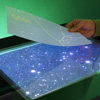
|
|
74. CDT Organic LED Displays
Demonstrating the highest resolution display produced to date by CDT's
Godmanchester development line. With Casio providing the active
matrix backplane, CDT ink jet printed its P-OLED materials to create a
stunning 3" diagonal, full colour, wide-QVGA (420x240) display.
|
|
|
ReadYourMeter.org
ReadYourMeter.org aims to help people to record and explain the energy
consumption of buildings. This then allows them to determine whether
changes they make in their behaviour reduce their energy consumption or
increase it.
|
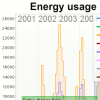
|

